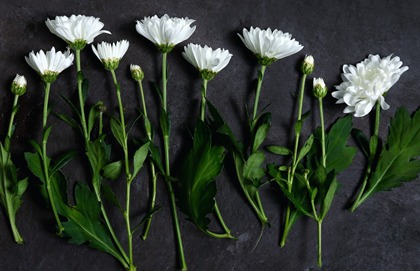What kind of culture will Pentecostalism produce? There has been a lot of talk lately among scholars about the rise of Pentecostalism as a global force. Much of it is focused on the implications of Pentecostalism on the church, the state, and the economy—sociological talk—but not, to my admittedly limited knowledge, little is focused on the impact that Pentecostalism will have on arts culture.
We know a little bit about what Catholic culture looks like. We have Caravaggio, and Graham Greene and Evelyn Waugh, and Flannery O'Connor, and Shusaku Endo. We know a bit about Reformed culture too. There's Shakespeare, and Rembrandt, and Makoto Fujimura, and Marilynne Robinson. But we don't really know what to expect when it comes to Pentecostalism's effect on anything, let alone its effect on literature, or painting, or film. It has a way of blowing our categories apart.
But there are signs that Pentecostalism is beginning to lick at the edges of culture. No, I'm not talking about Kris Allen (who?). I'm talking about a new novel by Sam Martin.
Martin's second novel, A Blessed Snarl, also sets categories on fire. It's a Canadian novel. It is set in Newfoundland, with its fog, sadness, and joy, and from Ontario, with stops in Hamilton, Toronto, and Peterborough. All of the characters lives are tightly woven through the threads of these towns, and dyed by their cultural landscapes. In this way I was reminded of Alice Munro and Alistair MacLeod. The comparison isn't too far-fetched. Martin is a top-notch writer. Despite moments of being too self-aware (I blame his Ph.D program for this), the novel is masterfully woven, and its metaphors—like fog parting on the Newfoundland coast—reveal great beauty, and almost aways show something new.
But its characters dwell on faith with a complexity and knowledge that one doesn't usually catch in Can-lit. I suppose this makes it a Christian novel.
A Christian novel? Its characters are far too flawed, the story far too complex, and its threads too loose and frayed to fit into what publishers traditionally place in this category. A quick glance at two of the protagonists—Patrick, and Natalie—would make Janet Oke's characters blush, hike up their petticoats, and head for their cabins in horror.
When I tried to categorize the book after reading it, I found that Greene and Waugh first came to mind. Perhaps it is the centrality of wine to the story line. But again, the comparison is not a neat fit. Martin's contemplation of faith and its role in the lives of Canadians involves much more fire, oil, and ashes than I've read before. Characters long not just to know God, but to be consumed by him. And much of the book is a contemplation of the struggles faced when those embers burn low, or seem to be snuffed by a combination of ocean spray and wind.
Many have noted that Pentecostalism is a cross-denominational phenomenon. That is, Pentecostal tendencies appear in churches as diverse as Roman Catholic to non-denominational and everything in between. I've decided that Martin's novel is best categorized as Pentecostal in that way. It demolishes categories, while refining them. It is a Canadian novel; a postmodern novel; a Christian novel; a good novel.





